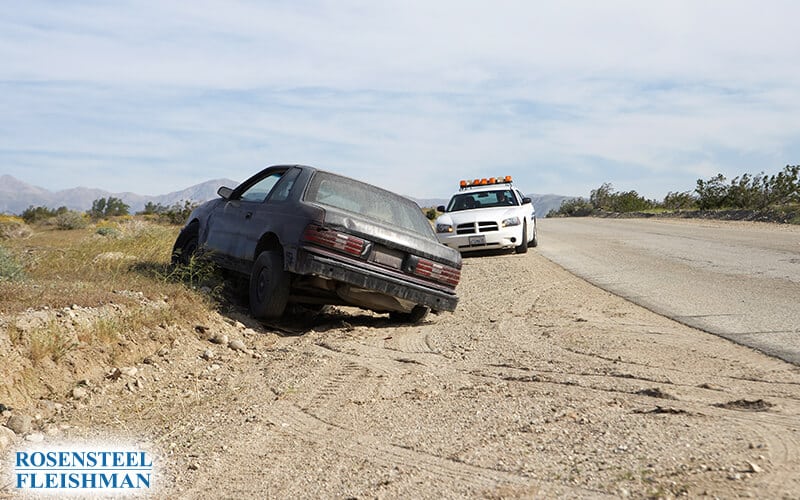Losing a loved one is one of the most devastating experiences a person can face. When that loss is due to someone else's negligence, it can be even harder to cope. You’re not just grieving—you’re also left wondering what to do next. Families in Charlotte often find themselves overwhelmed with questions about their legal rights […]

Defective Tires
According to reports by the National Highway Traffic Safety Administration (NHTSA), over 11,000 tire-related automobile crashes occur each year. Unfortunately, these types of incidents result in very serious and life-threatening injuries. As a direct consequence, tire-related crashes leave families devastated with both significant emotional and financial losses. Most people trust that the tires on their vehicle will get them safely from one destination to the next, but the reality is, tires fail as a result of different manufacturing defects.
Some of the most common instances of negligent tire manufacturing and tire failure can include:
- Tread separation
- Negligent installation
- Tire blowouts
Tread separation is the most common type of tire failure. It is a hazardous condition that occurs when the tread of the tire separates from the casing (or body). In order for the tire to remain durable and safe for travel, there must be a strong adhesive bond between all of the tire’s rubber components and its piles of fabric cords and metal wires. If there are cracks in the sidewall or tread, uneven treads, or bulges in the tread, they are all indications of potential tread separation. While driving, you may experience shaking while on the road, thumping in the tire, and/or radial pull to one side.
In some cases, the tires may simply be installed negligently. For example, the tires may not be mounted properly from a failure to use a bead lubricant, stretching or tearing the bead because the tire was not correctly positioned, incorrect positioning of the tire leading to air leaks or bead failure, or overinflating tires in an effort to seat them.
A tire blowout is a sudden release of air in the inner-tube of the tire or in a tubeless tire. If any part of the tire is defective, the normal operating heat of the tire materials, which is generally intensified at high speeds, pushes apart plies of the carcass in a blowout and often throws off pieces of the tire tread. When a blowout occurs, attempting to steer the vehicle is practically unmanageable. Steering becomes extremely difficult or impossible, causing the vehicle to wobble back and forth or crash into another vehicle or structure.
Provisions of the National Traffic and Motor Vehicle Safety Act have a direct impact on automobile tire defect cases. The Act authorized the Secretary of Transportation to establish federal safety standards for motor vehicles and their equipment, including tires. The Secretary carries out the provisions of the Act through the National Traffic Safety Bureau, which conducts accident injury research, testing and development, and undertakes inspection and investigation of factories and warehouses to enforce safety standards.
Automobile tires subject to federal safety regulations must be permanently and conspicuously labeled with such safety information as (i) suitable identification of the manufacturer, (ii) composition of the material used in the ply of the tire, (iii) actual number of plies in the tire, (iv) maximum permissible load for the tire, and (v) a recital that the tire conforms to federal minimum safety performance standards. In many ways, this allows a buyer to have some sense of whether the tires are good, average, or poor in relation to safety related characteristics.
Violation of federal safety standards may result in penalties, injunctions and restraining orders, criminal contempt proceedings, or fines against the manufacturer or seller. The Act also requires an automobile or automobile equipment manufacturer to give notice of any defect relating to safety within a reasonable time after discovery of the defect. Ultimately, these federal safety provisions operate as a notice to manufacturers of automobile tire equipment; failure to uphold the requisite safety guidelines can result in strict liability if injury or death results.
To prevail under a theory of strict liability against a manufacturer of a defective tire that causes injury or death to the buyer, the plaintiff must establish that the (i) defendant was engaged in the business of manufacturing and selling tires, (ii) that were expected to and did reach the buyer in the condition in which they were sold, and (iii) that as a result of a defect in construction or design, (iv) which made the tire unreasonably dangerous, (v) the plaintiff was injured and damaged while using the tire in the manner in which it was intended to be used. As with any other negligence case, the plaintiff will have to establish that tire was in fact defective and that the defect made it unreasonably dangerous for its intended use.
Strict liability claims against manufacturers of defective tires also include claims against the manufacturer of a defective component part, such as a tire valve assembly or wheel assembly, the distributor, and retail outlet where it was ultimately sold. In addition, the owner of the brand name or trademark under which it was manufactured and sold may face liability. It is important to note, however, for strict liability to be imposed, the defective tire must have been introduced into the stream of commerce and have reached the plaintiff-buyer through that medium of distribution. Therefore, a manufacturer of a tire who furnished it, rather than sold, to a testing facility for road testing will likely not be held strictly liable. Where the tire does in fact reach the buyer through the stream of commerce, the rule not only protects the owner and user, it also protects occupants of the vehicle who were injured in a collision caused by the tire’s defective condition.
If you or a loved one believe the injuries you suffered were linked to defective tires, contact the skilled attorneys at Rosensteel Fleishman Car Accident & Injury Lawyers. Our effective counsel may be able to help you receive compensation for pain and suffering, wrongful death, medical bills, disability, and loss of earning potential. Call today, the initial consultation is free of charge.
Additional Personal Injury Articles
After a motorcycle accident, life can feel like it’s been flipped upside down. There’s the physical pain, the questions about medical bills, and the uncertainty about what to do next. For many people in Charlotte, this can be an overwhelming time. You might wonder if the insurance company will treat you fairly, or if there’s […]
Every cyclist in Charlotte knows that intersections can be risky, especially when traffic signals are ignored or road design fails to protect bike lanes. It’s not just a matter of caution. When someone on a bike gets hit at an unsafe intersection, the injuries can be serious and the aftermath overwhelming. Medical bills start piling […]
Being in a car accident is stressful enough, but the situation can become even more complicated if the other driver doesn’t have insurance. It’s one of those moments where confusion and frustration collide, especially when you’re stuck with damage to your vehicle or even injuries. Many people in Charlotte find themselves in this exact situation, […]
